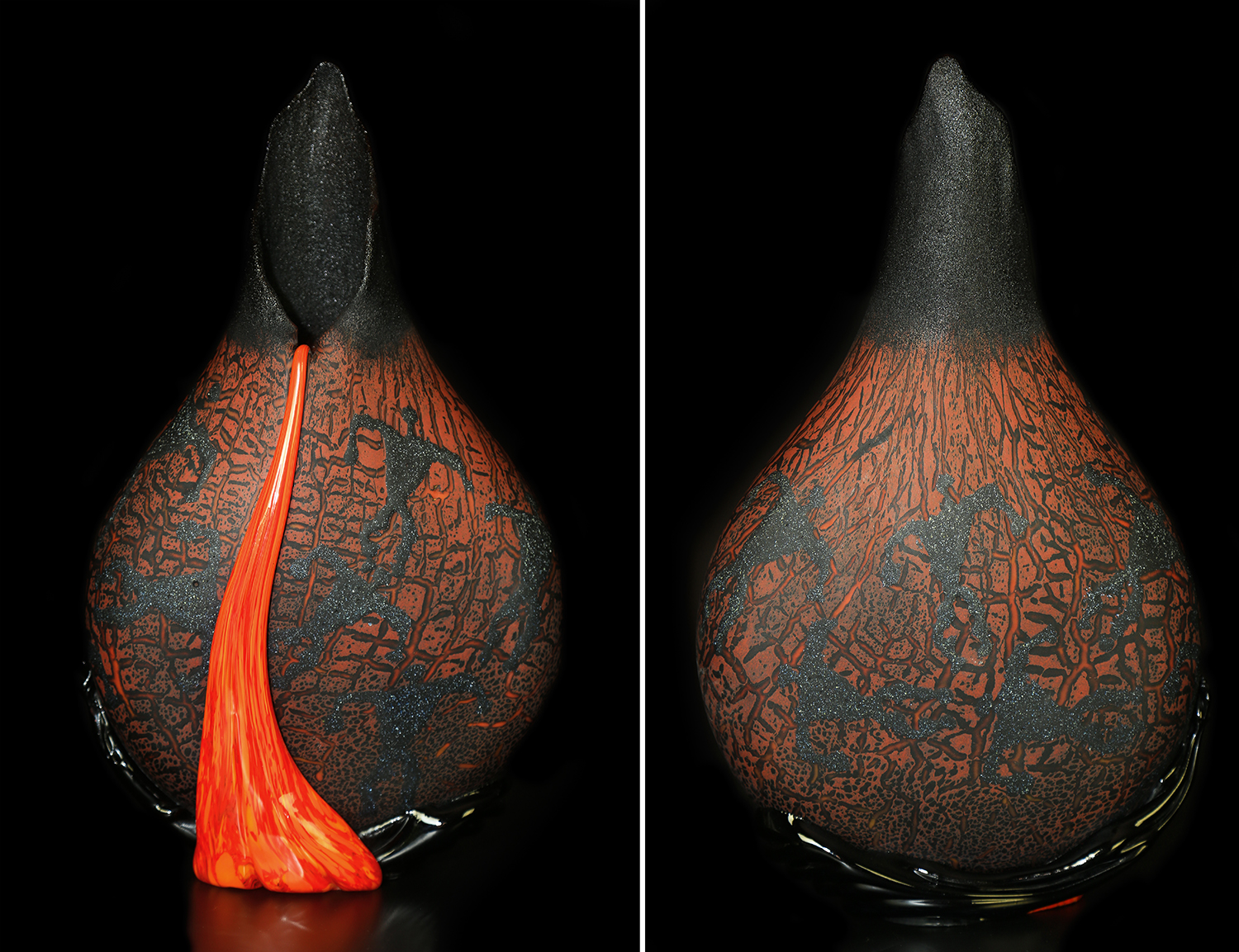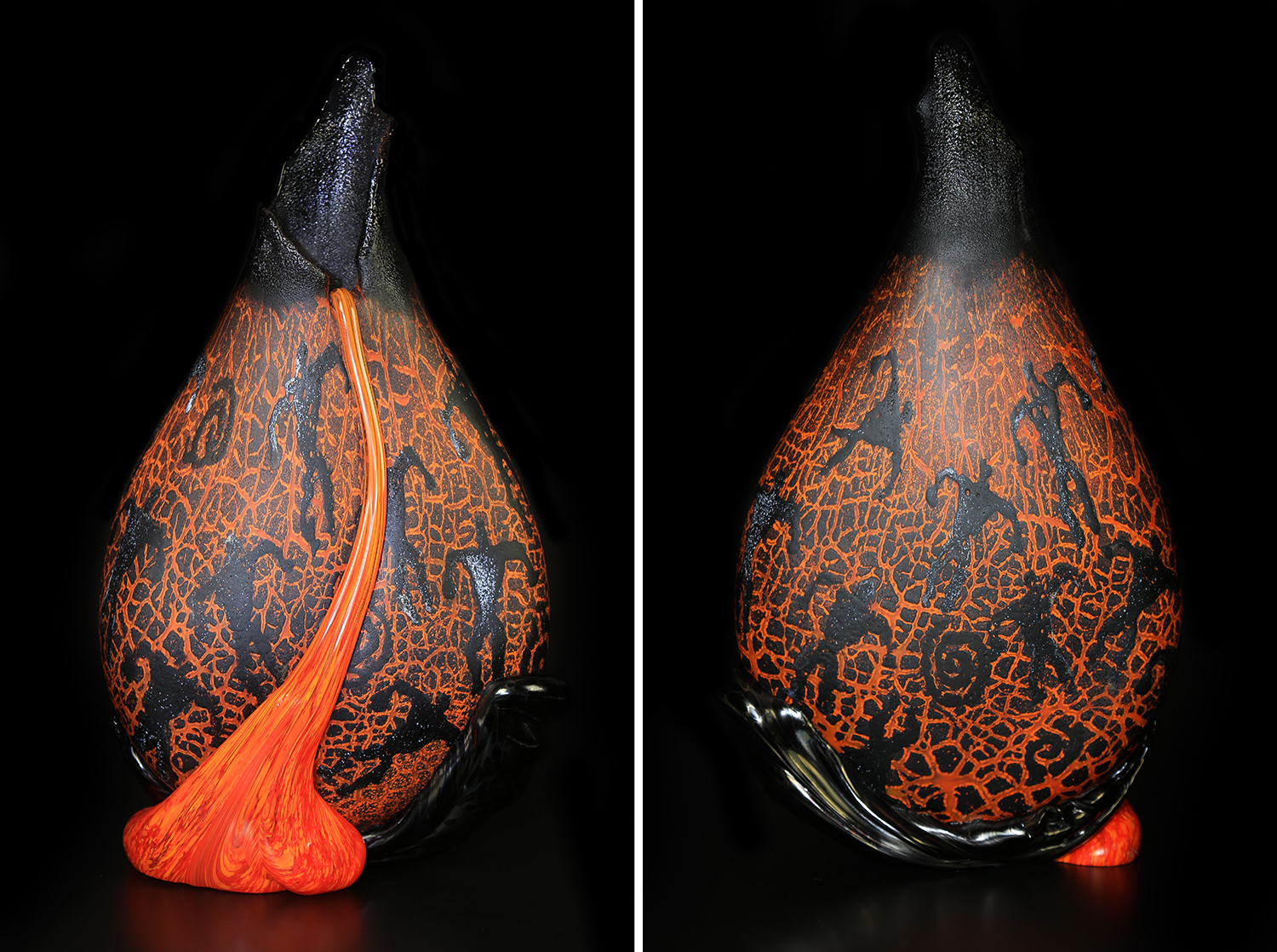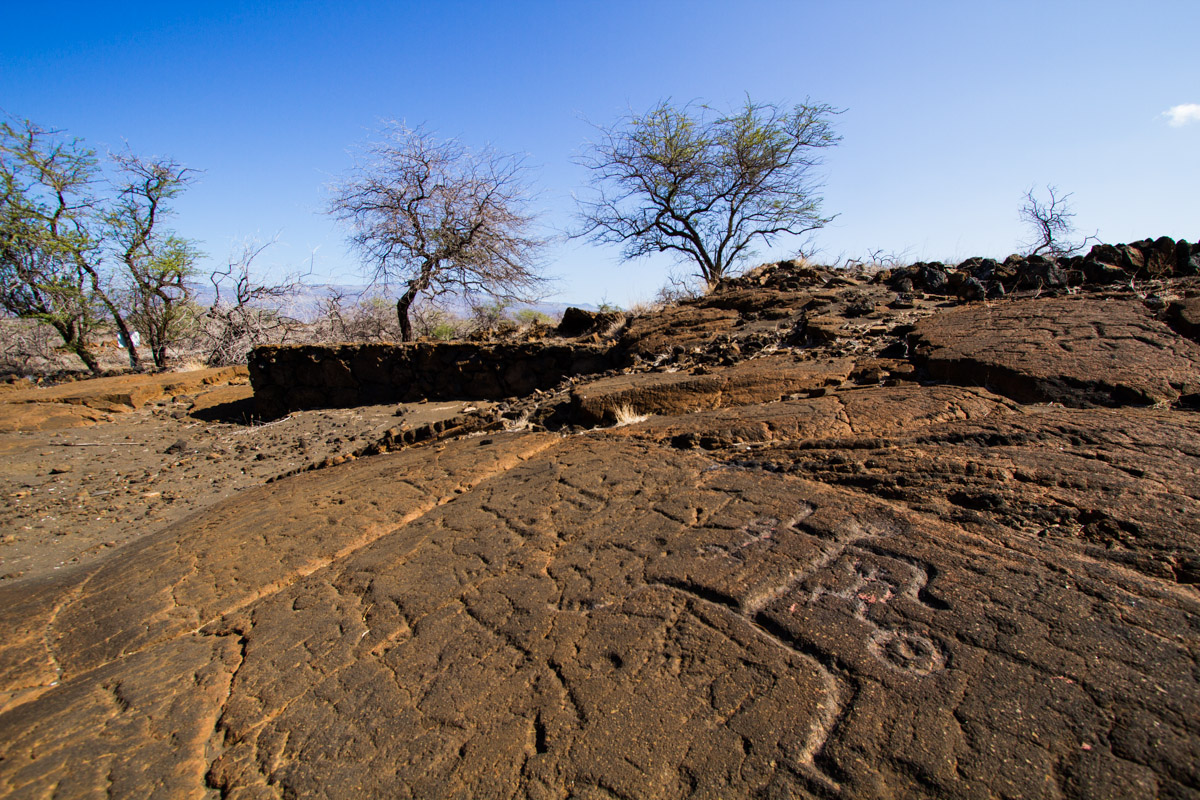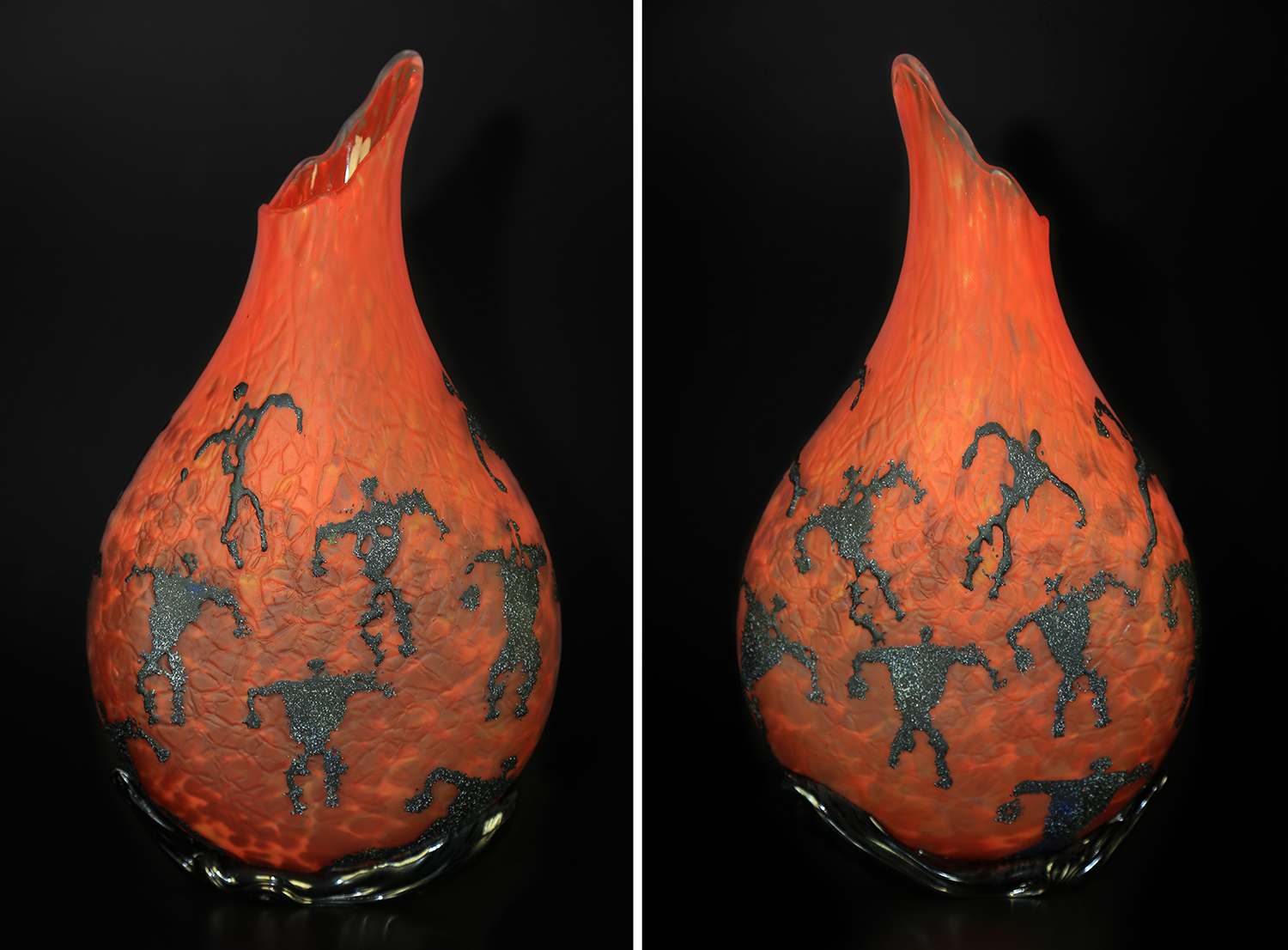The Puako Petroglyph vase.
The Puakō petroglyph series is inspired by the historic preserve of petroglyph fields north of Kailua-Kona. This preserve offers a unique view into the history of Hawaii. Some of these petroglyphs date back to the 16th century.
The word “Petroglyph” comes from the Greek words, “petros” for rock, and “glyphein” to carve. Hawaiians call this form of rock art “k’i’i pohaku“, or images in stone.
Some of the petroglyph images are clustered near historic land boundaries or along foot “highways” through lava fields, but the full reasons for their location and creation remain a mystery.





—
At the Puako historic Park – Hiking for inspiration

The Volcanic flow from Kilauea has been the source of inspiration for Daniel for many years. Witnessing the lava pouring and bursting through the cracks of the dry black lava rocks and into the ocean at times, is one of the most fascinating things we get to witness on this island. The pure raw creation of new land.
Kilauea is the home of PELE, the Hawaiian volcano goddess. Hawaiian chants and oral traditions tell, in veiled form, of many eruptions fomented by Pele before the first European saw the summit in 1823. Kilauea is one of the most active volcanoes on the planet and an invaluable resource for volcanologists who are able to study it up close due to its exclusively non-violent effusive activity.
Kilauea means “spewing” or “much spreading” in the Hawaiian language, referring to its frequent outpouring of lava.






